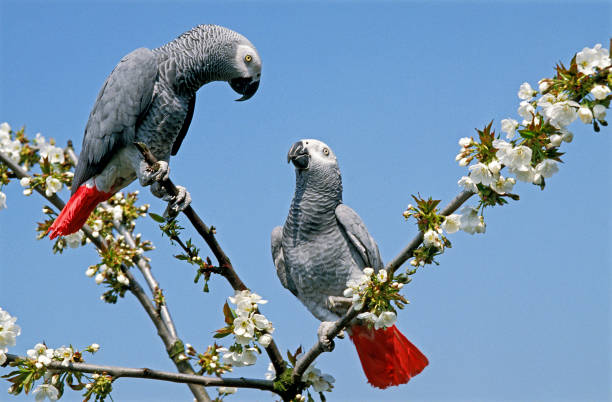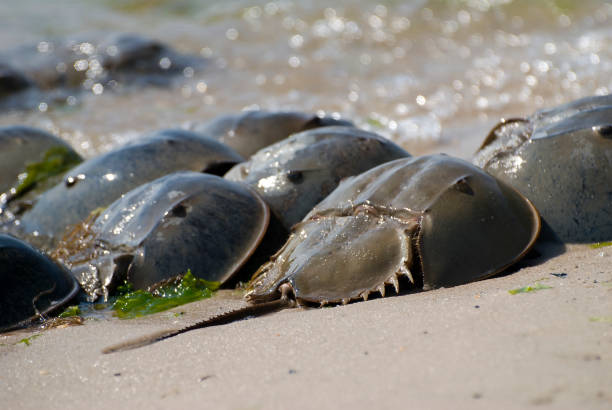In the vast tapestry of life, one of the most fascinating mysteries lies in the reproductive strategies of animals. Some creatures, such as elephants and humans, invest deeply in a few offspring, nurturing them carefully for years. Others, like frogs, fish, and insects, lay thousands or even millions of eggs in a single reproductive season, leaving them to survive largely on their own. This striking difference raises a fundamental biological question: why do some animals lay thousands of eggs while others produce only a few?
The answer lies in evolution, ecology, and the mathematics of survival. Each species has evolved its reproductive strategy as a response to environmental pressures, predation risks, life span, and the likelihood of offspring survival. Laying thousands of eggs is not a random or wasteful act—it is a finely tuned evolutionary adaptation to ensure that at least a few individuals survive to reproduce in the next generation.
Understanding why some animals produce enormous numbers of eggs gives us insight into how life has diversified and adapted across the planet. It also reveals how reproduction, at its core, is a balance between quantity and quality, risk and reward, and chance and care.
The Concept of Reproductive Strategy
Every species on Earth faces a fundamental biological challenge: to pass on its genes to the next generation. To accomplish this, organisms must produce offspring, but the way they do so varies dramatically. The number of eggs laid, the level of parental care, the timing of reproduction, and the energy invested in each offspring all form part of a species’ reproductive strategy.
These strategies are shaped by natural selection, the process that favors traits that enhance survival and reproduction. When survival rates of offspring are low—due to predation, harsh environments, or unpredictable conditions—natural selection often favors species that produce many eggs. By contrast, when the environment is stable and the chances of survival for each offspring are high, species tend to produce fewer eggs and invest more care in each one.
In essence, the number of eggs an animal lays is a reflection of its evolutionary environment. It is not about abundance for its own sake but about maximizing reproductive success in the context of ecological realities.
The Balance Between Quantity and Quality
In nature, reproduction involves a trade-off between the number of offspring produced and the amount of energy invested in each one. This trade-off is sometimes summarized by the “quantity versus quality” principle. An organism has a limited amount of energy and resources to devote to reproduction. It can either produce many small offspring with minimal parental investment or produce a few large offspring and invest heavily in their survival.
Species that produce many eggs typically provide little or no parental care. The eggs are often small, poorly protected, and left to develop independently. However, the enormous number compensates for the high mortality rate. Even if only a small fraction survive, the population remains stable.
Species that produce few eggs, on the other hand, tend to protect and nurture their young. Mammals, for example, invest a tremendous amount of energy in gestation, lactation, and care. Because the survival rate of each offspring is higher, fewer are needed to sustain the species.
This trade-off between quantity and quality is one of the most important principles in reproductive biology. It underlies the diversity of reproductive strategies seen across the animal kingdom.
Environmental Factors and Survival Probability
The environment plays a decisive role in determining reproductive strategies. Animals that live in unstable or unpredictable environments often lay large numbers of eggs. For example, many aquatic species face environments where currents, temperature fluctuations, or pollution can destroy eggs and larvae before they mature. To counter these hazards, they produce overwhelming numbers of eggs, increasing the odds that at least some will survive.
Predation is another major factor. When eggs and juveniles are exposed to predators, producing thousands of eggs becomes an insurance policy against extinction. In contrast, species that can protect their eggs or offspring—such as birds that build nests or mammals that carry their young—can afford to produce fewer eggs because the survival rate is higher.
Availability of food also influences egg production. Species that reproduce in nutrient-rich environments often lay many eggs because there are sufficient resources for larvae to feed on. Conversely, in nutrient-poor or competitive ecosystems, fewer but more developed offspring may have a better chance of survival.
Temperature, seasonality, and lifespan further shape egg-laying patterns. Animals with short lifespans and rapid reproductive cycles, such as insects and small fish, often produce thousands of eggs during their brief lifetime to ensure continuity.
The Evolutionary Logic of Egg Overproduction
At first glance, laying thousands or millions of eggs may seem wasteful. Most of them will never hatch, and many larvae will die before reaching maturity. However, from an evolutionary perspective, this apparent wastefulness is a calculated strategy. Evolution does not favor efficiency; it favors effectiveness. If producing vast numbers of eggs leads to more surviving offspring overall, it is a successful strategy.
This logic follows the principle of r-selection in evolutionary biology. In the 1970s, ecologists Robert MacArthur and E. O. Wilson introduced the concepts of r-selected and K-selected species to describe two contrasting reproductive strategies.
R-selected species reproduce rapidly and in large numbers, thriving in environments where survival is uncertain and resources fluctuate. Their strategy emphasizes quantity over quality. Examples include fish, amphibians, and many invertebrates.
K-selected species, by contrast, produce fewer offspring but invest heavily in their care. They tend to inhabit stable environments where competition is intense but survival rates are higher once individuals mature. Mammals, birds, and large reptiles often follow this pattern.
Thus, animals that lay thousands of eggs are typically r-selected species, adapted to high-risk, high-mortality environments where overproduction ensures genetic continuity.
Aquatic Life and the Advantage of Mass Reproduction
The aquatic environment presents unique challenges for reproduction. Water currents, temperature changes, and numerous predators make it difficult for eggs and larvae to survive. Consequently, many aquatic animals lay enormous numbers of eggs to offset these losses.
Fish are among the most prolific egg producers. A single female cod can lay between two and six million eggs in one spawning season. Similarly, the ocean sunfish (Mola mola) can lay up to 300 million eggs, one of the highest known numbers in the animal kingdom. However, less than one in a million may reach adulthood.
In most fish species, fertilization occurs externally. Females release eggs into the water, and males release sperm to fertilize them. Because the eggs are exposed and unprotected, they are vulnerable to being eaten, dispersed, or destroyed. High fecundity is therefore a necessary adaptation.
Amphibians, such as frogs and toads, face similar challenges. They lay hundreds or thousands of eggs in ponds and streams, often attaching them to vegetation. The eggs hatch into tadpoles that must survive predators, diseases, and environmental fluctuations. To compensate for these risks, frogs may lay several thousand eggs at a time.
Marine invertebrates like oysters, sea urchins, and corals are even more prolific. An adult female oyster can produce up to 100 million eggs in a single spawning season. These species rely on sheer numbers because their offspring disperse widely as plankton, with most being eaten by other organisms before settling and maturing.
Insects and the Power of Rapid Reproduction
Insects are perhaps the most successful egg-layers on the planet, both in quantity and adaptability. Their strategy relies on rapid, mass reproduction and short life cycles. An adult female housefly can lay up to 500 eggs in her lifetime, while a termite queen may produce tens of thousands of eggs per day. Some moths and butterflies lay several thousand eggs over a few weeks.
For many insects, the key to survival is not the longevity of individuals but the rapid turnover of generations. By producing large numbers of offspring quickly, they ensure that at least some will survive changing conditions or predation. This high reproductive rate allows insects to colonize diverse habitats, recover from population crashes, and evolve rapidly.
Environmental unpredictability also favors prolific egg-laying. Insects such as mosquitoes lay their eggs in temporary pools or damp areas that may dry up quickly. Producing hundreds of eggs ensures that even if many perish, enough will hatch when conditions become favorable again.
Amphibians and the Strategy of Vulnerable Beginnings
Amphibians, particularly frogs and toads, represent a classic case of animals that rely on quantity over parental protection. Most amphibian species lay their eggs in water, where they are susceptible to being eaten by fish, insects, and other amphibians. Because they cannot guard every egg, they produce large clutches to improve the odds of survival.
A female bullfrog, for example, may lay up to 20,000 eggs in a single breeding season. These eggs hatch into tadpoles that face intense competition and predation. Only a small percentage will survive long enough to metamorphose into adult frogs.
Interestingly, some amphibian species have evolved intermediate strategies that combine high egg numbers with some degree of parental care. Certain tropical frogs guard their eggs or carry tadpoles on their backs, while others lay fewer but larger eggs on land, where predation pressure is lower. These variations illustrate how reproductive strategies evolve in response to local environmental conditions.
Reptiles and the Intermediate Strategy
Reptiles exhibit a broad range of reproductive behaviors. Some species, such as sea turtles, are known for laying large numbers of eggs. A single female sea turtle may lay between 50 and 200 eggs in one nesting event and repeat this multiple times in a season. Despite this abundance, very few hatchlings survive to adulthood due to predators, ocean currents, and human interference.
On the other hand, many reptiles, including some lizards and snakes, lay fewer eggs but may protect their nests or even incubate eggs internally. Crocodilians provide one of the most striking examples of parental care among reptiles. Although they lay many eggs—often 30 to 60 per nest—they guard their nests fiercely and help hatchlings reach the water, increasing their survival rate.
Thus, reptiles display a continuum of reproductive strategies, from the purely numerical approach of turtles to the more protective methods of crocodiles.
Birds and the Transition Toward Parental Care
Birds represent a shift from high egg numbers to intensive parental investment. Most bird species lay only a few eggs per clutch, ranging from one to a dozen, but they provide extensive care. However, some bird species—particularly those in harsh or unpredictable environments—still lay relatively large numbers of eggs compared to their body size.
Shorebirds and ducks, for example, may lay ten or more eggs, often because their chicks face high predation risks. Penguins, in contrast, lay one or two eggs and dedicate months to incubation and protection.
The evolution of flight also influenced egg-laying strategies. Because carrying extra weight reduces flight efficiency, birds evolved to produce fewer but larger eggs with better survival prospects. Parental care, nest building, and cooperative breeding compensated for the reduction in egg numbers.
Mammals and the Shift to Low Egg Production
Mammals represent the opposite extreme from fish and insects. Most mammals give birth to live young rather than laying eggs, and they invest heavily in gestation, nursing, and protection. As a result, they produce very few offspring compared to egg-laying animals.
However, there are exceptions. Monotremes, such as the platypus and echidna, are egg-laying mammals. Even they lay only one to three eggs per reproductive cycle, demonstrating how mammalian reproduction has evolved toward quality and care rather than quantity.
The energy investment in mammalian offspring is enormous. Pregnancy, lactation, and extended parental care all require significant resources. Because the survival rate of each individual is high, mammals have no evolutionary need to produce large numbers of eggs or offspring.
The Role of Energy and Parental Investment
Energy allocation is at the core of reproductive strategy. Producing thousands of eggs requires less energy per egg but results in low individual survival probability. Producing few offspring with high parental care requires more energy but yields higher survival rates.
Animals adapt their strategies according to their energetic capacity and ecological niche. Small-bodied organisms with short lifespans and limited energy reserves typically follow the mass-reproduction strategy. Large, long-lived animals with complex behaviors tend to invest in a few offspring.
This balance is also influenced by population dynamics. When mortality rates are high and unpredictable, overproduction of eggs ensures the persistence of the species. When mortality is low and predictable, fewer, well-protected offspring suffice.
The Influence of Predation and Competition
Predation is one of the strongest selective pressures shaping reproductive behavior. Species whose eggs or young are vulnerable to predators benefit from producing large numbers of offspring. Even if predators consume most, some will survive to maturity.
Competition for resources also influences reproduction. In ecosystems where food is scarce or competition is intense, laying fewer eggs may be advantageous because it allows parents to invest more in each offspring’s development. Conversely, in environments where resources fluctuate rapidly, producing many eggs during favorable conditions maximizes success.
The Role of Chance and Evolutionary Stability
In evolutionary terms, laying thousands of eggs is not simply about maximizing survival—it is also about minimizing risk. This strategy spreads reproductive success over large numbers, reducing the likelihood that all offspring will perish due to a single event. It is a form of biological insurance known as bet-hedging.
Bet-hedging ensures that even under unpredictable environmental conditions, some offspring survive. For example, some fish lay eggs in different locations or at different times to increase the chance that at least one batch will encounter favorable conditions.
Over evolutionary timescales, these strategies become stable because they consistently ensure population persistence. Natural selection refines the number of eggs, timing of reproduction, and developmental speed to suit specific ecological niches.
Modern Insights from Evolutionary Ecology
Modern research in evolutionary ecology has expanded our understanding of reproductive strategies. Scientists now study not just how many eggs are laid but also their size, energy content, and developmental timing. These factors collectively determine survival probability and evolutionary success.
Studies on marine species show that egg size correlates with larval survival—larger eggs contain more nutrients, giving larvae a better start. However, producing large eggs limits the total number that can be laid. Thus, animals continually face trade-offs between size and number, investment and opportunity.
Advances in genetics and evolutionary modeling have revealed that reproductive traits evolve in response to multiple interacting pressures—predation, food availability, climate, and even social behavior. The diversity of egg-laying patterns across species is therefore the outcome of millions of years of adaptation and fine-tuning.
The Human Perspective and Conservation Implications
Understanding why some animals lay thousands of eggs is not only a matter of curiosity; it has practical implications for conservation. Many of these prolific species—such as fish, amphibians, and marine invertebrates—are under threat from overfishing, habitat loss, and climate change. Because their survival strategy relies on high reproduction rates, any disruption that affects spawning or egg survival can have catastrophic effects on their populations.
Protecting spawning grounds, maintaining water quality, and preserving ecological balance are essential for sustaining these species. Conservationists also use knowledge of reproductive biology to design breeding programs that maximize survival rates in captivity and in the wild.
The Continuum of Life Strategies
In nature, reproductive strategies exist on a continuum rather than in distinct categories. Some species combine features of both quantity and care. For instance, certain fish guard their eggs, reducing mortality while still laying hundreds. Some insects carry their eggs on their bodies or in burrows, providing partial protection. Evolution constantly experiments with variations of these strategies, producing a rich diversity of reproductive behaviors.
This continuum reflects the flexibility of life. There is no single “best” strategy—only those that work under specific conditions. Whether an animal lays two eggs or two million, its reproductive pattern represents an evolutionary solution to the problem of survival in a changing world.
Conclusion
The question of why some animals lay thousands of eggs is ultimately a question about life’s resilience and adaptability. It reveals how evolution crafts different paths to the same goal: the continuation of a species.
Animals that produce vast numbers of eggs are not careless or wasteful; they are masters of survival in unpredictable, perilous environments. Each egg represents a chance—a roll of nature’s dice—that somewhere, sometime, a new generation will rise.
From the oceans filled with drifting fish eggs to the ponds teeming with frog spawn, from the buzzing hives of insects to the nesting beaches of sea turtles, the strategy of mass reproduction stands as a testament to the diversity and ingenuity of life on Earth. It reminds us that in the grand design of nature, every approach—from the nurturing mother to the prolific spawner—plays an essential role in the endless cycle of birth, struggle, and renewal that defines the living world.






